The President’s Inflation Reduction Act (IRA) of 2022 makes the single largest investment in climate and energy in American history, enabling America to tackle the climate crisis, advancing environmental justice, securing America’s position as a world leader in domestic clean energy manufacturing, and putting the United States on a pathway to achieving the Biden-Harris Administration’s climate goals, including a net-zero economy by 2050.
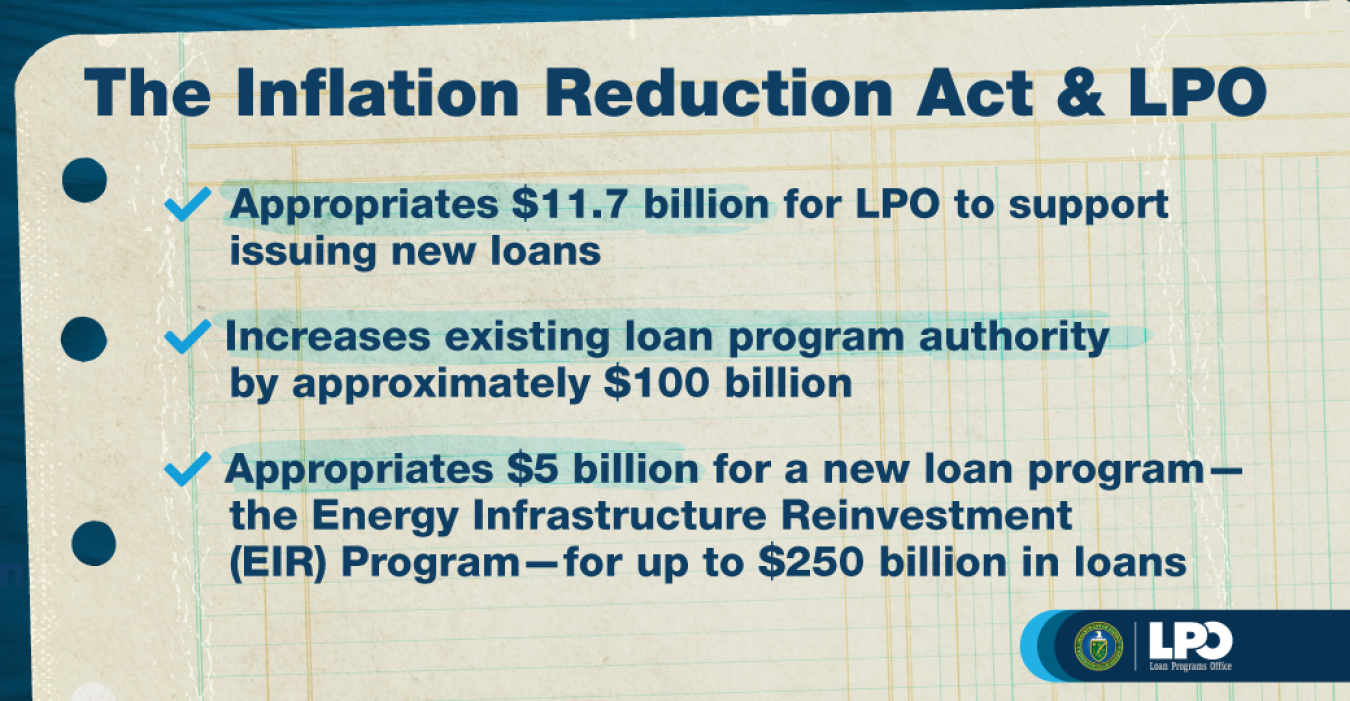
Within its energy and climate provisions, IRA appropriates approximately $11.7 billion in total for the Loan Programs Office (LPO) to support issuing new loans. These amounts increase loan authority in LPO’s existing loan programs by approximately $100 billion. The IRA also adds a new loan program, the Energy Infrastructure Reinvestment (EIR) Program (section 1706) to help retool, repower, repurpose, or replace energy infrastructure that has ceased operations or to improve the efficiency of infrastructure that is currently operating. The wide-ranging impacts of these new and expanded authorities are further described below.
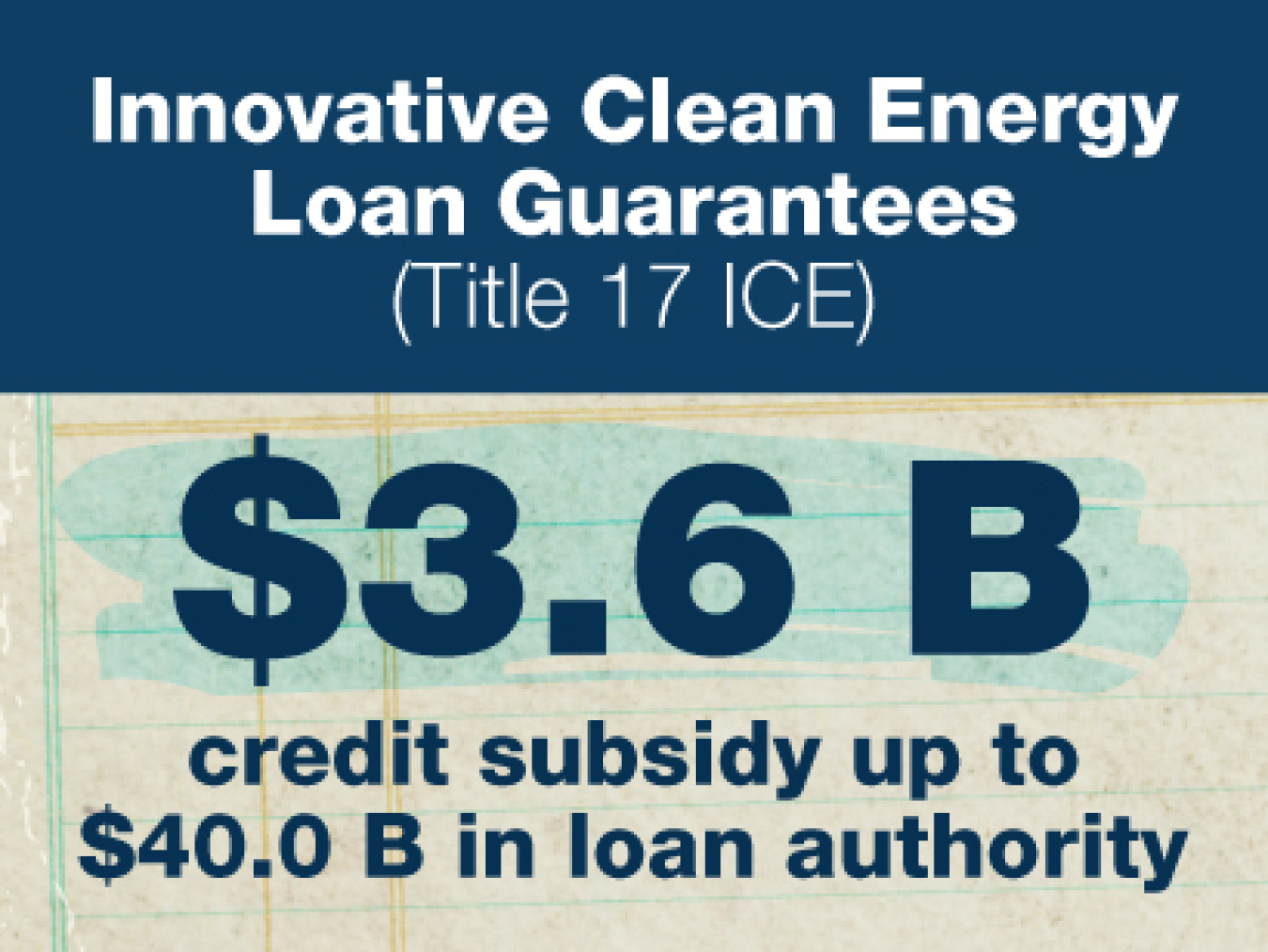
Title 17 Clean Energy Financing Program
Innovative Energy, Innovative Supply Chain, and State Energy Financing Institution Authority (Section 1703)
IRA provides an additional $40 billion of loan authority for projects eligible for loan guarantees under section 1703 of the Energy Policy Act of 2005, to remain available through September 30, 2026. The legislation appropriates $3.6 billion in credit subsidy to support the cost of those loans and sets aside a percentage of these amounts for administrative expenses to help carry out the program, including monitoring and originating new loans.
This new loan authority is open to all currently eligible section 1703 technology categories, including fossil energy and nuclear energy. IRA appropriations also support the expanded activities authorized by the President’s Bipartisan Infrastructure Law (BIL) that required new appropriations to go into effect. These expanded activities include projects involving critical minerals processing, manufacturing, and recycling, and removing the innovation requirement for State Energy Financing Institution-backed projects.
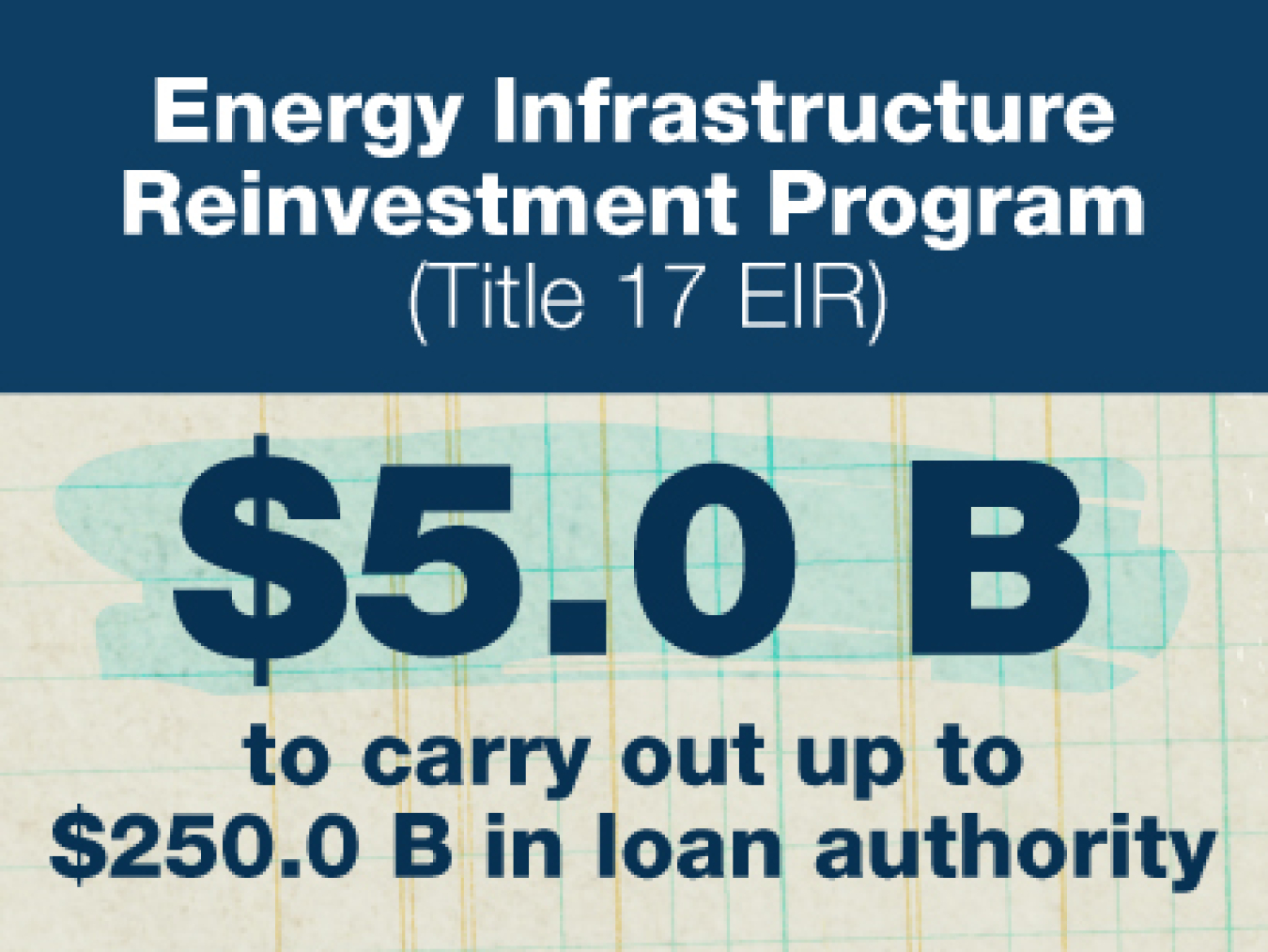
Energy Infrastructure Reinvestment (EIR) Program (Section 1706)
IRA creates a new program under Title 17 (section 1706), the EIR Program, to guarantee loans to projects that retool, repower, repurpose, or replace energy infrastructure that has ceased operations; or enable operating energy infrastructure to avoid, reduce, utilize, or sequester air pollutants or anthropogenic emissions of greenhouse gases. IRA appropriates $5 billion through September 30, 2026, to carry out EIR, with a total cap on loans of up to $250 billion.
The Title 17 Interim Final Rule amends Title 17 regulations to implement changes that expand or modify program authority and to revise for clarity and organization. For example, potential projects could include repurposing shuttered fossil energy facilities for clean energy production, retooling infrastructure from power plants that have ceased operations for new clean energy uses, or updating operating energy infrastructure with emissions control technologies, including carbon capture, utilization, and storage. While the section 1706 program does not have the same requirements as Title 17 Clean Energy Financing loan guarantees with respect to projects utilizing innovative technology and reducing, avoiding, utilizing, or sequestering greenhouse gas emissions, EIR does require that eligible projects replacing energy infrastructure that has ceased operations and that involve electricity generation through the use of fossil fuels have controls or technologies to avoid, reduce, utilize, or sequester air pollutants and anthropogenic emissions of greenhouse gases.
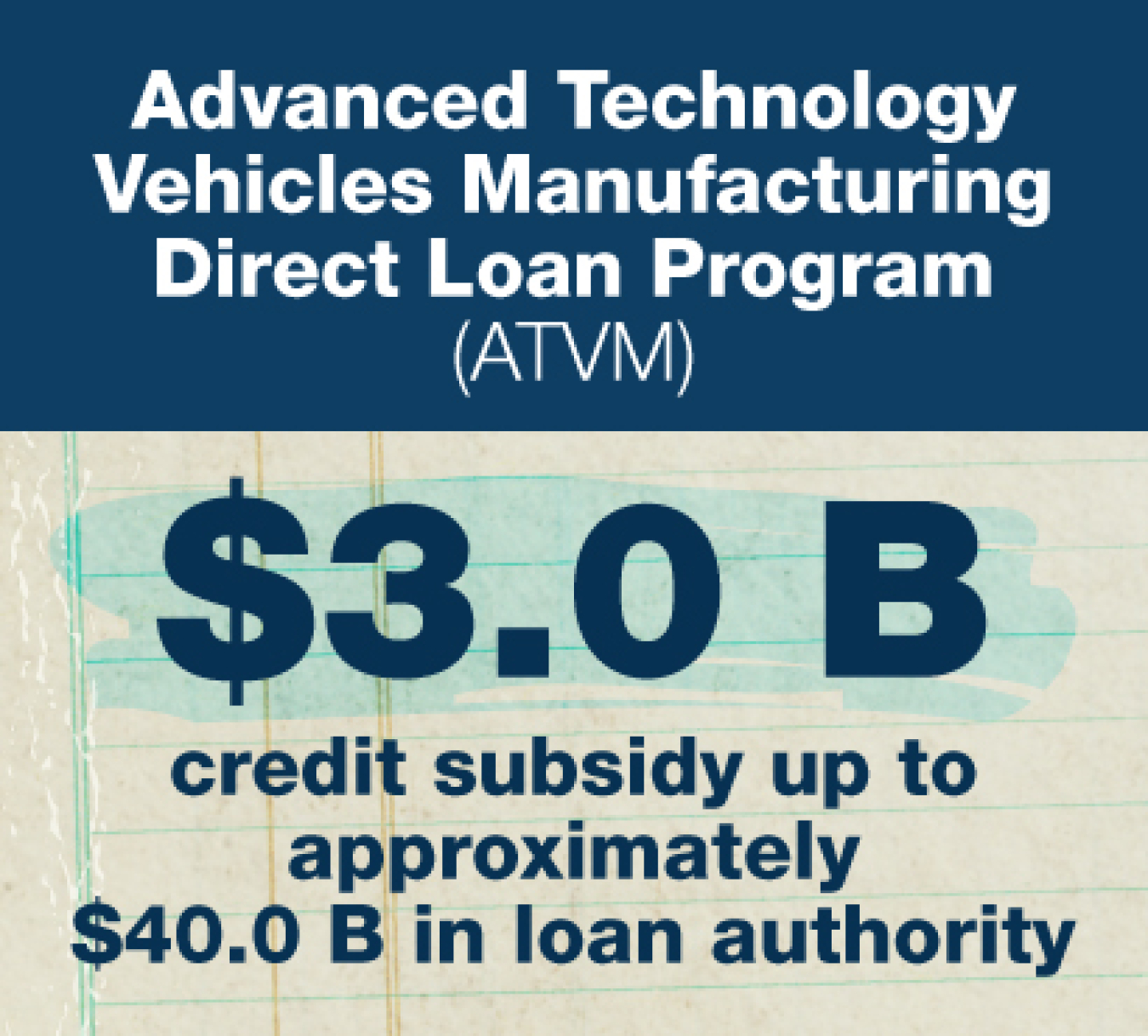
Advanced Technology Vehicles Manufacturing (ATVM) Direct Loan Program
The legislation removed the $25 billion cap on the total amount of ATVM loans established under Section 136(d)(1) of the Energy Independence and Security Act of 2007. This means the program is no longer limited in the total amount of loans it can issue, as long as it has appropriated credit subsidy available to support the cost of those loans.
IRA appropriates $3 billion to remain available through September 30, 2028, for the costs of direct loans under ATVM. In addition to amounts supported by previously appropriated credit subsidy, this $3 billion is estimated to provide for an additional ~$40 billion in loan authority for a total estimated available loan authority under ATVM of ~$55.1 billion (as of August 2022). IRA also sets aside amounts for administrative expenses to help carry out the program, including originating new loans and monitoring the growing portfolio.
New appropriations provided by IRA may be used by the Secretary to issue loans for a range of advanced technology vehicles and their components, including newly authorized uses from the BIL, which to date had not been funded. Expanded uses include medium- and heavy-duty vehicles, locomotives, maritime vessels including offshore wind vessels, aviation, and hyperloop.
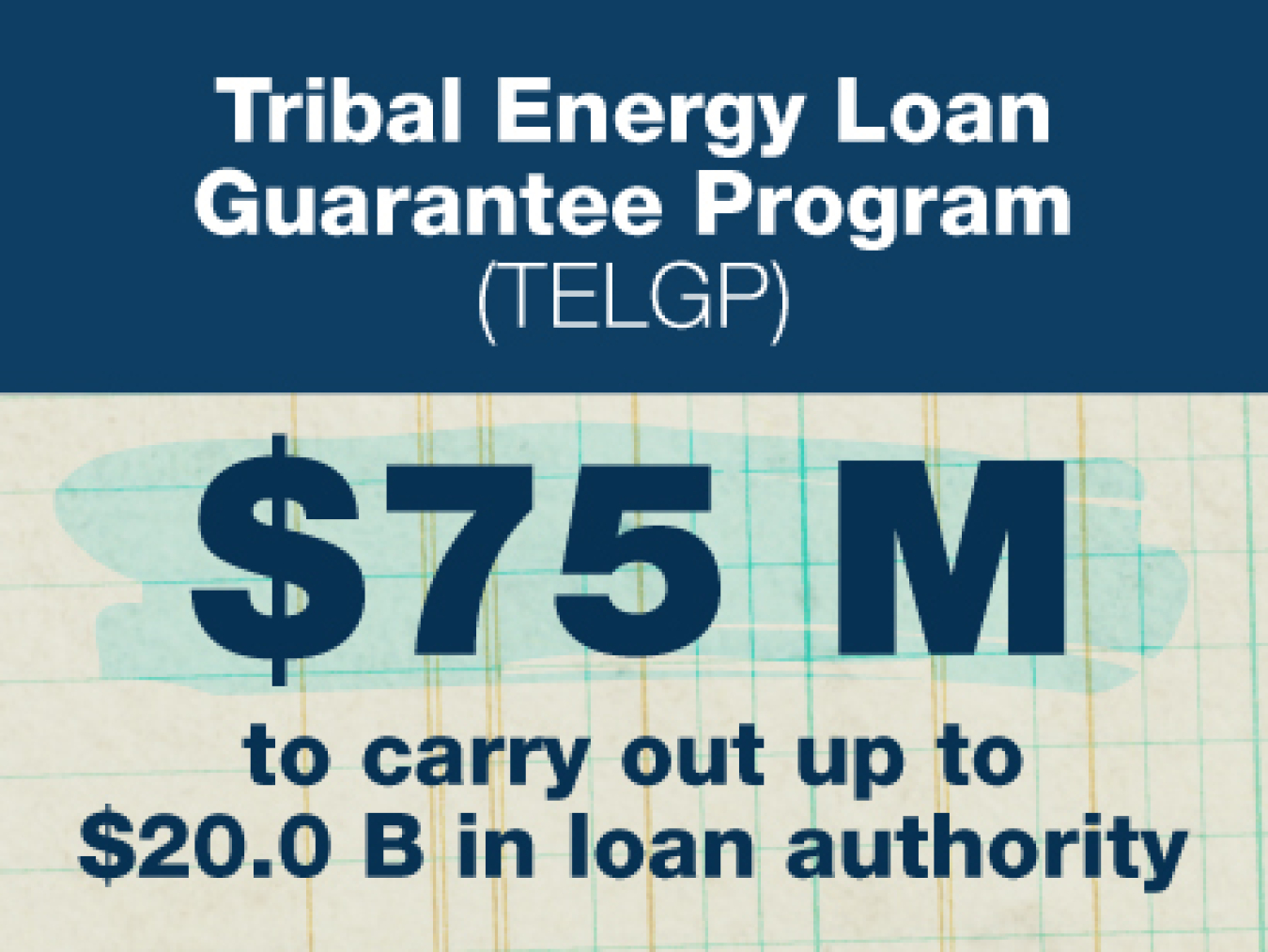
Tribal Energy Finance Program
Finally, IRA increases the aggregate amount of loans available at any time under the Tribal Energy Finance Program (also known as the Tribal Energy Loan Guarantee Program or “TELGP”) from $2 billion to $20 billion. It also provides $75 million to remain available through September 30, 2028, to carry out TELGP under section 2602(c) of the Energy Policy Act of 1992. Notably, the IRA also makes permanent access for borrowers to apply for direct loans through the U.S. Treasury’s Federal Financing Bank (FFB) via TELGP as authorized under The Consolidated Appropriations Act 2022, Public Law No. 117-103. TELGP was originally established to provide partial guarantees of commercial or other qualified loans made for energy development to a federally recognized Indian Tribe, Alaska Native Corporation, or Tribal energy development organization. While partial loan guarantees remain available, access to direct loans through FFB obviates the need for a Tribal borrower to also secure a commercial debt partner, which is expected to facilitate Tribes’ utilization of the program for energy development investments.
Other tax incentives in IRA are expected to position many clean energy technologies for deployment and spur investment in domestic supply chains. LPO will work with partners across the Department to identify opportunities for borrowers or potential borrowers to learn more about these programs.
Frequently Asked Questions (FAQs)
HOW MUCH DID THE INFLATION REDUCTION ACT OF 2022 PROVIDE LPO FOR ISSUING NEW LOANS?
IRA appropriates approximately $11.7 billion in total for LPO programs to support issuing new loans. These amounts increase LPO’s existing loan programs by approximately $100 billion in new loan authority. The IRA also adds a new loan program, the EIR Program (section 1706), which can help repurpose energy infrastructure that has ceased operations or are still operating. The IRA provides $5 billion to support this new authority, with a total cap on loans of $250 billion.
WHAT IS LPO’S TRACK RECORD HISTORICALLY FOR MAKING THIS KIND OF INVESTMENT?
Prior to the September 30, 2011, sunset date of the American Recovery and Reinvestment Act of 2009 (ARRA) Section 1705 program, LPO guaranteed $16.1 billion in loans to 25 ARRA projects. These projects supported more than 10,000 jobs and have the capacity to power more than 1 million average American homes annually. Through Fiscal Year 2021, the projects have cumulatively avoided 39.2 million tons of CO2 emissions. And several of the projects that LPO financed have served as springboards to market acceptance for technology sectors that are readily financed by commercial lenders today, such as utility-scale solar photovoltaic (PV) and wind.
A decade ago, LPO provided loan guarantees for the first five utility-scale solar PV projects in the United States larger than 100 megawatts. The United States now has more than 71,000 megawatts of utility-scale PV projects installed while prices are now competitive with all other forms of electricity generation. LPO also guaranteed a loan to Shepherds Flat, one of the largest wind farms in the world. At a time when only one large wind deal had been done in the bond market, LPO’s partial guarantee helped boost the project’s credit rating and attract new investors in multiple markets. The deal was awarded as the 2011 Renewable Energy Deal of the Year by Environmental Finance for its innovative financing. Since 2011, utility-scale wind projects have been able to attract commercial lenders and continue to grow as one of the largest sources of new electricity in the United States.
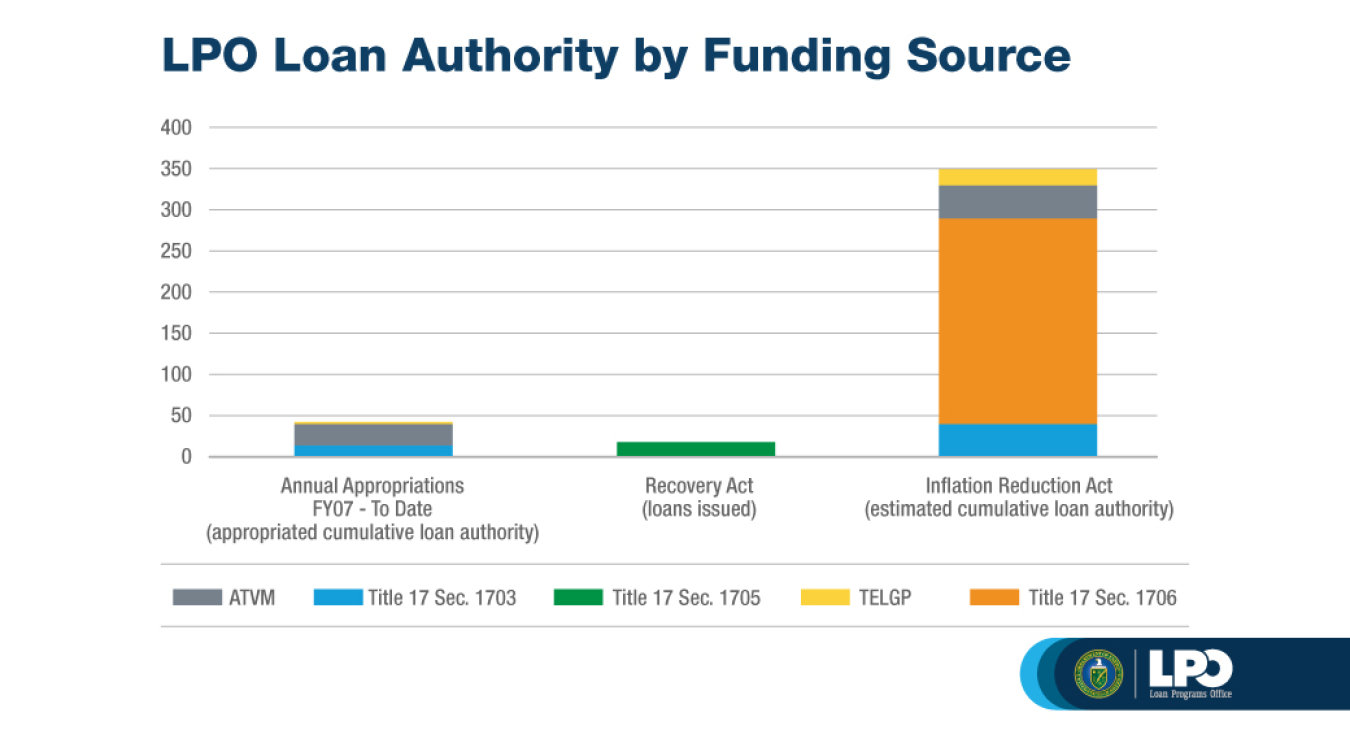
The U.S. Energy Information Agency expects 10 percent of utility-scale electricity generation in 2021 to come from wind turbines. A decade ago, LPO financed projects through the Section 1705 program in order to demonstrate successful commercial operation and bankability to commercial lenders, who could then finance future projects. Utility-scale solar PV and wind projects with LPO loan guarantees were able to do that and have become a significant part of the U.S. energy mix, helping to move the nation toward a future with more clean energy. Since LPO made its first investments in utility-scale wind and solar in 2010, more than $1 trillion in global investments have subsequently flowed into renewable energy. Commercial lenders know that LPO loan recipients have been rigorously vetted and earned LPO’s seal of confidence when they’ve secured a loan; and they’ve had access to the guidance, vision, and expertise of DOE’s best-in-class scientists, engineers, and experts along the way.
IS THERE ENOUGH PRIVATE SECTOR INTEREST TO JUSTIFY IRA INVESTMENT IN LPO?
As indicated in LPO’s Monthly Application Activity Report (MAAR), requested loan authority exceeds LPO’s estimated total available loan authority. While not every loan application will move forward, as of the end of August 2023, LPO had 167 active applications totaling $143.9 billion in requested loans and loan guarantees across a variety of sectors.
HOW WILL LPO DECIDE WHICH PROJECTS RECEIVE LOANS?
Potential applicants are encouraged to contact LPO for no-fee, no-commitment pre-application consultations prior to submitting a formal application. Pre-application consultations allow potential applicants to begin a dialogue directly with LPO staff to help LPO learn more about the project and to help ensure that applicants fully understand DOE's requirements and processes.
Based on the authority provided by Congress, LPO evaluates projects across all statutorily eligible technologies on a level playing field. LPO does not pick and choose the technologies that come to the office.
Projects that submit an application go through a two-part application process to evaluate project eligibility then to evaluate project viability. If a project completes this application process, it is invited into due diligence and term sheet negotiation, a process similar to that of commercial lenders.
WHEN WILL MY ORGANIZATION BE ABLE TO APPLY FOR A LOAN THROUGH THE NEWLY CREATED SECTION 1706 ENERGY INFRASTRUCTURE REINVESTMENT (EIR) PROGRAM?
Now! The EIR Program is open for business. View eligibility criteria here. If you have a project that may be eligible for financing through the EIR project category, please request a pre-application consultation.
DO IRA INVESTMENTS SUPPORT LOAN AUTHORITIES EXPANDED BY THE BIPARTISAN INFRASTRUCTURE LAW (BIL), INCLUDING EXPANDED ADVANCED TECHNOLOGY VEHICLE MANUFACTURING AND TITLE 17 AUTHORITIES?
Yes, newly appropriated loan authority and credit subsidy amounts support eligible projects under BIL-expanded authorities. Interested applicants should contact LPO to request a pre-application consultation.
CAN MY PROJECT RECEIVE FINANCIAL ASSISTANCE FROM ANOTHER DOE OR FEDERAL PROGRAM IN RELATION TO A LOAN SUPPORTED BY IRA FUNDING?
Sec. 50141 of the IRA precludes the use of amounts provided by IRA for commitments to loan guarantees under section 1703 (42 U.S.C. 16513), section 1706, and the TELGP program to projects that benefit from the use of other Federal support, subject to limited exceptions including projects benefitting from otherwise allowable Federal tax benefits.
WHAT IS LPO’S MISSION?
While significant capital is available for decarbonization technologies, these projects can still lack access to adequate debt capital. LPO fills this gap in commercial deployment by serving as a bridge to bankability for innovative and high-impact energy technologies, providing them with access to needed loans and loan guarantees when private lenders cannot or will not until a given technology has reached full market acceptance. Currently, LPO has billions in available loan authority through four loan programs:
- Title 17 Clean Energy Financing
- Advanced Transportation Financing
- Tribal Energy Financing
- Carbon Dioxide Transportation Infrastructure Finance and Innovation Act
Read more about LPO’s mission and track record.
Updated September 22, 2023

